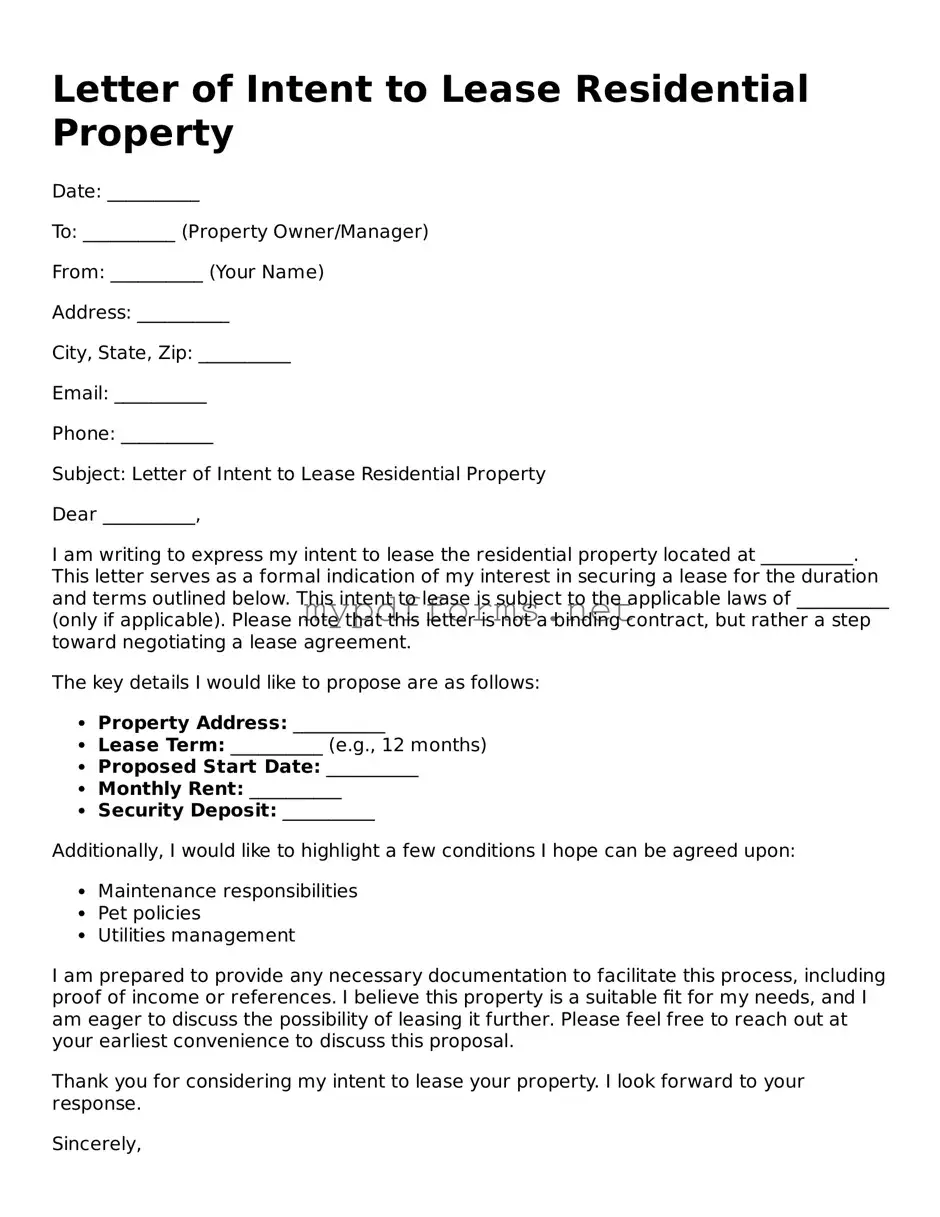The Letter of Intent to Lease Residential Property is quite similar to a Rental Application. A rental application is typically filled out by a prospective tenant to provide information about their background, employment, and financial status to a landlord. Both documents serve as preliminary steps in the leasing process, helping landlords gauge the suitability of potential tenants. While the Letter of Intent expresses a tenant's desire to lease a property, the rental application dives deeper into the tenant's qualifications and readiness to enter a lease agreement.
Another document that shares similarities is the Lease Agreement. A lease agreement is a legally binding contract that outlines the terms and conditions of renting a property. While the Letter of Intent is more of a preliminary expression of interest, the lease agreement solidifies the commitment between the landlord and tenant. Both documents address essential details such as rental terms, property descriptions, and responsibilities, but the lease agreement provides a comprehensive framework that governs the tenancy.
The Letter of Intent also resembles a Memorandum of Understanding (MOU). An MOU is a document that outlines the intentions of two or more parties to work together toward a common goal. Similar to the Letter of Intent, an MOU is not legally binding but establishes a mutual understanding of the terms discussed. Both documents facilitate communication and set the stage for future agreements, making them crucial in the negotiation process.
In the realm of homeschooling, understanding and submitting the Indiana Homeschool Letter of Intent form is essential for parents wishing to formally declare their intent to educate their children at home. This document plays a pivotal role in ensuring compliance with state regulations, much like other formal agreements in different contexts. For more information on how to properly complete this form, you can visit https://hsintentletter.com/indiana-homeschool-letter-of-intent-form/.
Another comparable document is the Offer to Lease. An offer to lease is a formal proposal made by a tenant to a landlord, indicating their willingness to rent a specific property under certain conditions. This document, like the Letter of Intent, serves as a starting point for negotiations. Both documents highlight the tenant's interest and outline key terms, paving the way for further discussions and eventual agreement.
Lastly, the Tenant Screening Consent Form bears similarities to the Letter of Intent to Lease Residential Property. This form grants landlords permission to conduct background checks on potential tenants. While the Letter of Intent expresses a tenant's desire to lease, the Tenant Screening Consent Form is more focused on the verification process. Both documents are essential in the tenant selection process, ensuring that landlords make informed decisions based on the information provided.
